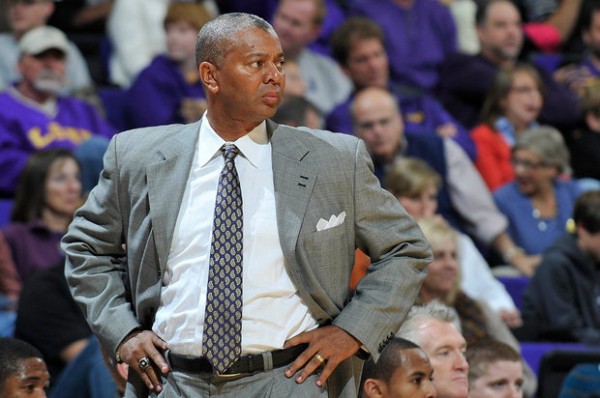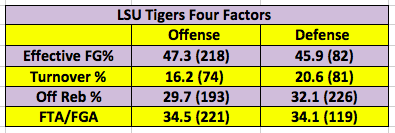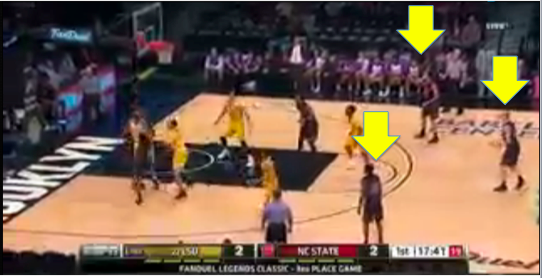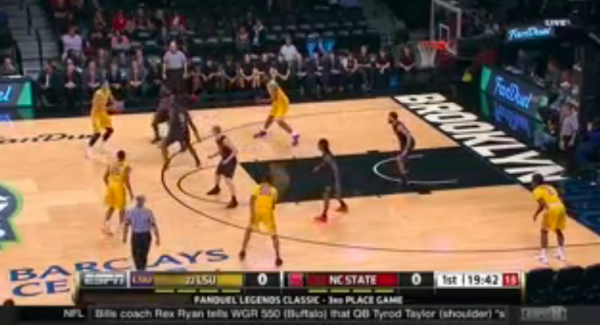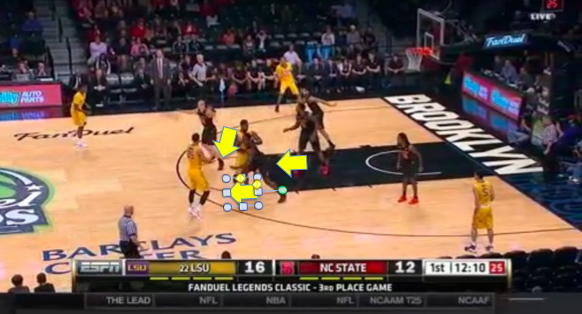Freeze Frame: What is Wrong with LSU?
Posted by Brian Joyce on December 2nd, 2015LSU entered the season with a palpable buzz surrounding the addition of rising superstar Ben Simmons, ESPN poster child and the top high school recruit in the country. Despite an air of sunny optimism in the program this preseason, fans in Baton Rouge have seen this show play out before. Johnny Jones has a deep roster with as much talent as all but a few teams around the country, but skeptics only need to point out that a team with two eventual NBA big men disappointed its way to a 22-11 overall mark and an opening round loss to NC State in last year’s NCAA Tournament.
At least those Tigers beat the College of Charleston. After three straight losses to middling programs this November, it is painfully clear that the Tigers need more than the return of injured guard Keith Hornsby and the eligibility of Arizona transfer Craig Victor to turn this ship around. Despite the facilitation gifts of Simmons, LSU has been plagued by a stagnant offense. In this edition of Freeze Frame, we take a deeper look at exactly what is causing their offensive woes.
The fact of the matter is that the Tigers have been completely inept on the offensive end. Jones’ club currently sits at 142nd in the country in KenPom’s adjusted offensive efficiency ratings, ranking above only Georgia and Missouri in the SEC. More specifically, LSU ranks 218th in the country in effective field goal percentage, 221st in free throw rate (free throw attempts/ field goal attempts), 281st in free throw percentage, and 193rd in offensive rebounding percentage. The great Dean Oliver identified the four essential factors that contribute to success in this sport, and unfortunately for the Tigers, they haven’t been effective in any of them.
One key element of LSU’s offense is its ability to score in transition. The Tigers take 39.3 percent of their initial field goal attempts within the first 10 seconds of the shot clock (courtesy of hoop-math.com), but because they haven’t been a strong defensive rebounding team, opposing teams can send perimeter and wing players back to defend the fast break instead of crashing the boards. In the two most recent losses, NC State gave up 18 fast break points to LSU (six of which came in the first five minutes before Mark Gottfried adjusted), while the College of Charleston held the Tigers to just seven transition points for the game.
Limiting the Tigers in transition forces them to execute their half-court offense, where their effective field goal percentage dips to 48.6 percent after an opponent’s made shot and just 41.7 percent after a defensive rebound. In this freeze frame, you can see where NC State has stationed three wing players ready to get back on defense as soon as the offensive player’s shot goes up.
Another key element of the Tigers’ offensive attack is, of course, Simmons. The freshman has been sensational at times (e.g., 21 points and 20 rebounds against Marquette) and pedestrian at others (four points on 1-of-6 shooting against NC State), and LSU’s last two opponents both threw multiple defensive schemes at him to force him to give up the ball. In the below frame, NC State double-teams Simmons on the perimeter to force another one of LSU’s players to take the shot.
NC State also closed out on Simmons as soon as he touched the ball. In the below frame, Wolfpack defenders converged so quickly that it almost made their defensive scheme appear to be a 2-3 zone. They were in a man-to-man defense at the time, but three defenders ran hard at him to give him little room in which to operate.
Again, the plan was to force someone other than Simmons to take the bulk of LSU’s shots. Jones did not deliver a post option, removing a threat near the goal, which left the opposite perimeter defender to dig in on Simmons. The takeaway here is that LSU wants to play in transition but opposing teams are forcing the Tigers to play in the half-court. In these increasingly likely situations, Simmons needs to become the immediate go-to offensive threat. He needs to be a little more selfish with the ball, and another consistent scoring option needs to emerge so that the Tigers are not so reliant on bailouts from the freshman.
Right now, LSU’s offense is a disaster. The Tigers are a young team with some time to figure this out, but these early season missteps and poor scheduling have left them with arguably only one more chance left for a decent non-conference win (Wake Forest). The next couple of games (against North Florida and Houston) mostly just represent additional chances for further LSU letdowns. Jones needs to quickly figure out how to get more out of his offense or Simmons’ one year in Baton Rouge will be for naught — a disappointing circumstance for a transcendent player the likes of whom only comes around once every few years.





























